Wenatchee National Forest
- January 18, 2024
- 0 comment
Wenatchee National Forest, a sprawling expanse of natural beauty located in the heart of Washington State, stands as a testament to the majestic wilderness of the Pacific Northwest. Covering a vast area of approximately 1.7 million acres, it stretches from the crest of the Cascade Range to the Okanogan-Wenatchee National Forest, merging breathtaking landscapes with a diverse array of wildlife. This forest is a haven for outdoor enthusiasts, offering a rich tapestry of recreational activities ranging from hiking and mountain biking to skiing and snowmobiling.

The forest is characterized by its diverse ecosystems, from arid lands on the eastern slopes to lush, old-growth forests in the west. The Wenatchee National Forest is not just a place of scenic beauty; it also plays a crucial role in environmental conservation, serving as a habitat for a wide variety of flora and fauna, including several endangered species. Its rivers and lakes, teeming with fish, offer both a playground for anglers and a vital resource for the region’s ecology. This forest is a living mosaic of nature’s artistry, a place where the tranquility of the natural world can be intimately experienced and cherished.
Characterizing Features of Wenatchee National Forest
- Vast Size and Diverse Terrain: Wenatchee National Forest encompasses an impressive 1,735,394 acres, stretching over 137 miles along the eastern slopes of the Cascade Range in Washington State. This vast size includes a variety of landscapes, from rugged mountainous regions to lush valleys, offering a visual feast and a diverse range of ecosystems.
- Six Designated Wilderness Areas: Within its boundaries, the forest boasts six wilderness areas: Alpine Lakes, Glacier Peak, Goat Rocks, Henry M. Jackson, Lake Chelan-Sawtooth, and William O. Douglas Wildernesses. Each area is unique, featuring pristine environments free from modern human development, providing crucial habitats for wildlife and natural processes to occur without interference.
- Waptus Lake: A gem within the forest, Waptus Lake is the largest alpine lake in the area, nearly two miles long and only accessible by hiking or horse trails. It’s known for its stunning vistas of surrounding mountains like Summit Chief and Bears Breast, offering a serene and untouched landscape.
- Diverse Ecosystems Due to Cascade Crest: The forest is uniquely bisected by the Cascade Crest. This geographical feature creates a rain shadow effect, resulting in two distinct ecological areas: a wet, lush environment on the western side and a drier, arid climate to the east. This diversity supports a wide range of plant and animal life.
- Rich History of Forest Management: Wenatchee National Forest’s history of management, including its combination with Okanogan National Forest in 2000, reflects a long-standing relationship between humans and this natural landscape. It has seen changes in land use, conservation practices, and recreational developments, each shaping its current character.
- Home to Rare and Endangered Species: The forest serves as a vital habitat for numerous species, including threatened and endangered ones such as the grizzly bear, gray wolf, and lynx. This makes it an essential area for conservation efforts and biodiversity studies.
- Popular Recreational Destination: Its proximity to major urban areas like Seattle makes it a sought-after destination for outdoor enthusiasts. The forest caters to a variety of recreational activities, from hiking and camping to skiing and wildlife viewing, appealing to a broad spectrum of visitors.
- Significant Old Growth Forests: A notable portion of Wenatchee National Forest consists of old-growth forests, estimated to cover around 318,800 acres. These areas are crucial for maintaining ecological balance, providing habitat for wildlife, and offering a glimpse into the forest’s ancient past.
- Impact of Natural Events: The forest’s landscape has been shaped by natural events, including wildfires and lightning storms. These events play a role in the ecological dynamics of the forest, influencing vegetation patterns, wildlife habitats, and forest management strategies.
- Cultural and Ecological Education Resource: Wenatchee National Forest serves not just as a recreational space, but also as an educational resource, offering insights into ecological conservation, forest management, and the importance of preserving natural habitats for future generations.
History
The history of Wenatchee National Forest is a fascinating tale of natural evolution and human interaction with the wilderness. Established in 1908, this expansive forest originally functioned as an independent unit within the National Forest System. Its formation was a part of the early 20th-century conservation movement in the United States, which sought to preserve and manage vast tracts of wilderness areas for public use and enjoyment. The forest spans across the eastern slopes of the Cascade Range in Washington State, encompassing a diverse range of ecosystems and landscapes.
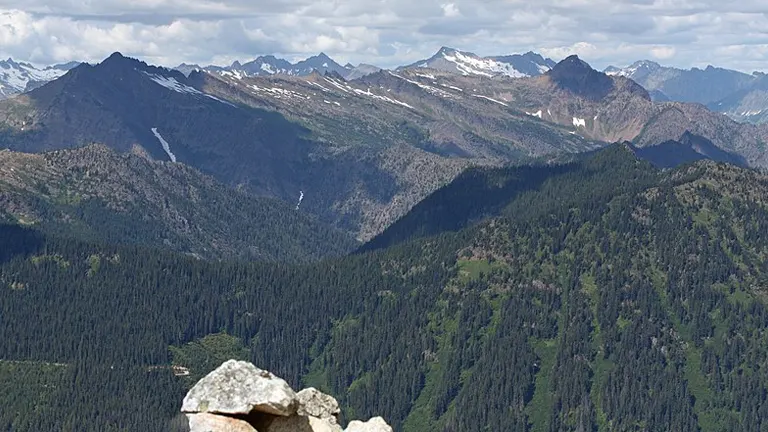
Throughout its history, Wenatchee National Forest has been shaped by various land use practices and policies. In its early years, the forest was heavily utilized for grazing, with nearly 150,000 sheep roaming its landscapes. This extensive grazing had significant ecological impacts, leading to habitat degradation and erosion, and paved the way for a shift in forest management practices focusing on conservation and sustainable use.
In the year 2000, Wenatchee National Forest underwent a significant administrative change when it was combined with the neighboring Okanogan National Forest. This merger created a unified management approach for over four million acres of forest land, now known as the Okanogan-Wenatchee National Forest. This combined entity aimed to enhance ecological management, recreational access, and conservation efforts across a more extensive area.
The forest has also experienced its share of natural challenges, notably wildfires. These fires have played a critical role in shaping the forest’s ecology, clearing old growth, and paving the way for new vegetation and habitats. These natural events, along with human management strategies, have continually shaped the landscape of Wenatchee National Forest, making it not only a place of natural beauty and recreational opportunity but also a living example of the dynamic relationship between humans and the natural environment.
Importance in Conservation and Recreation in Wenatchee National Forest
Wenatchee National Forest holds immense importance in both conservation and recreation, serving as a crucial sanctuary for diverse ecosystems and a playground for outdoor enthusiasts. From a conservation perspective, the forest is a bastion of biodiversity, providing habitat for numerous species, including threatened and endangered ones like the grizzly bear, gray wolf, and lynx. Its extensive old-growth forests, alpine meadows, and river ecosystems play a vital role in maintaining ecological balance, offering a living laboratory for environmental studies and conservation efforts. The forest’s management practices, focused on sustainable use and protection of natural resources, demonstrate a commitment to preserving these landscapes for future generations.
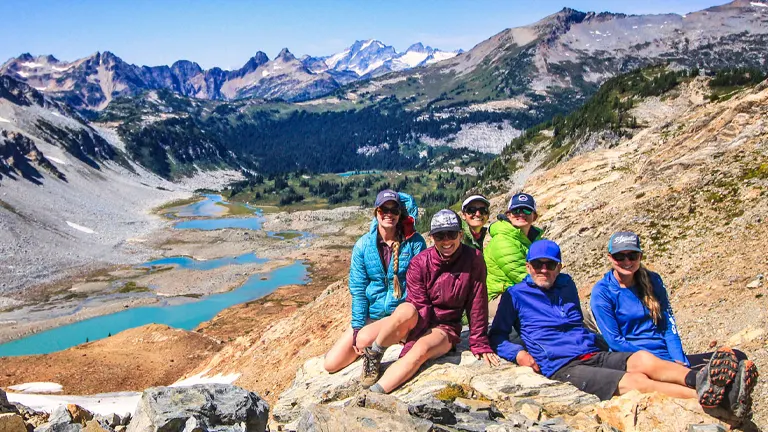
In terms of recreation, Wenatchee National Forest is a jewel in the Pacific Northwest. It offers a plethora of outdoor activities that cater to a wide range of interests and skill levels. Hiking, camping, skiing, fishing, and wildlife viewing are just a few of the activities that draw millions of visitors annually. Its proximity to major urban centers like Seattle makes it an accessible escape to nature, providing a necessary respite from urban life. The forest’s diverse terrain, from snow-capped peaks to serene valleys, ensures that each visit can offer a new experience. In essence, Wenatchee National Forest serves a dual role, acting as both a guardian of natural heritage and a provider of recreational and educational opportunities, making it a vital asset to the Pacific Northwest and the nation.
Unique Location
Wenatchee National Forest’s unique location sets it apart as a remarkable natural area in the Pacific Northwest. Situated in Washington State, it extends approximately 137 miles along the eastern slopes of the Cascade Range, from the Okanogan National Forest to the Gifford Pinchot National Forest. This positioning across the Cascade Mountains results in a striking contrast of ecosystems due to the Cascade Crest’s rain shadow effect. On the western side of the crest, the forest receives ample rainfall, fostering lush, dense coniferous forests and vibrant undergrowth. In contrast, the eastern slopes experience a drier climate, characterized by a more arid, shrub-steppe ecosystem.
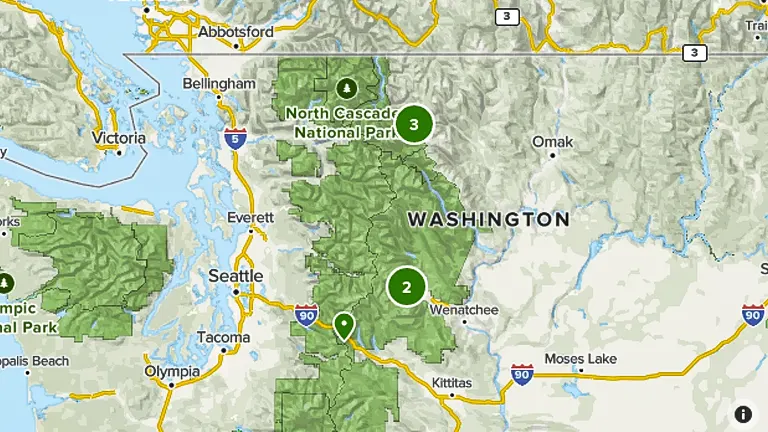
This dramatic shift in ecological environments within a relatively short distance offers a diverse range of habitats for plants and animals, and a variety of scenic landscapes for visitors. The forest’s location also places it within reach of several major urban areas, making it an accessible destination for millions of people seeking outdoor recreation and an escape into nature. This unique blend of accessibility, ecological diversity, and scenic beauty makes Wenatchee National Forest a distinct and valued component of Washington’s natural heritage.
Diverse Vegetation and Plant Species in Wenatchee National Forest
- Subalpine Fir (Abies lasiocarpa): Found in the subalpine regions, these trees are a staple of the forest’s higher elevations.
- Engelmann Spruce (Picea engelmannii) and Lodgepole Pine (Pinus contorta): These species dominate the forest’s rugged terrain, adapting well to the challenging conditions.
- Ponderosa Pine (Pinus ponderosa) and Douglas-Fir (Pseudotsuga menziesii): Common on the forest’s eastern slopes, these trees are iconic of the Pacific Northwest.
- Western Larch (Larix occidentalis) and Quaking Aspen (Populus tremuloides): These species add to the forest’s diversity, each with unique ecological roles.
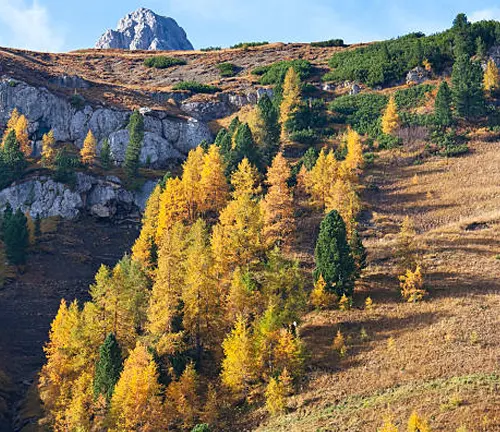
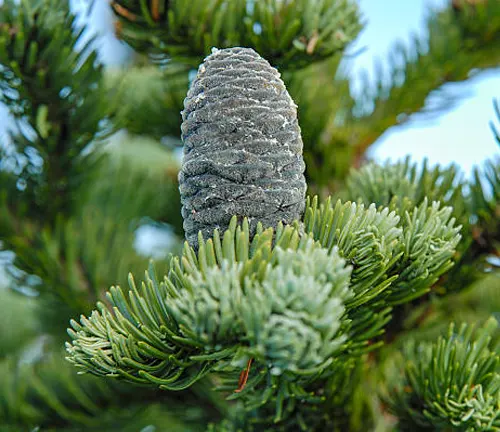
Fauna
- Grizzly Bear (Ursus arctos horribilis): Though rare, grizzly bears are one of the forest’s most iconic species.
- Gray Wolf (Canis lupus): The return of wolves to the region is a testament to successful conservation efforts.
- Lynx (Lynx canadensis): The Methow Valley in the forest supports one of the largest lynx populations in the Lower 48.
- Bull Trout (Salvelinus confluentus) and Chinook Salmon (Oncorhynchus tshawytscha): These fish are vital for the region’s aquatic ecosystems and are indicators of water quality.
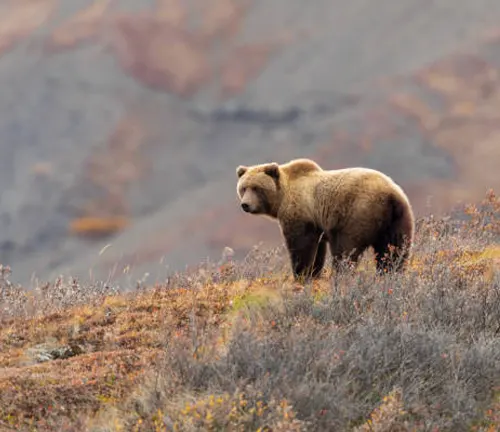
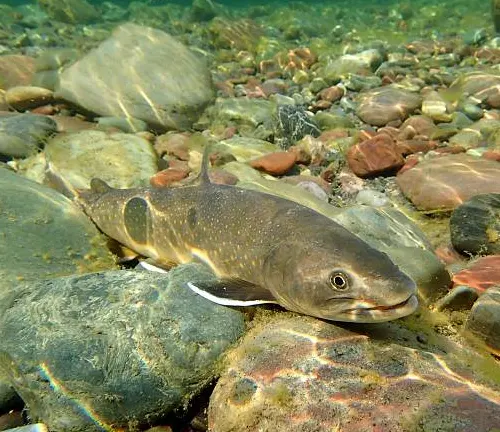
Attractions in Wenatchee National Forest
1. Alpine Lakes Wilderness
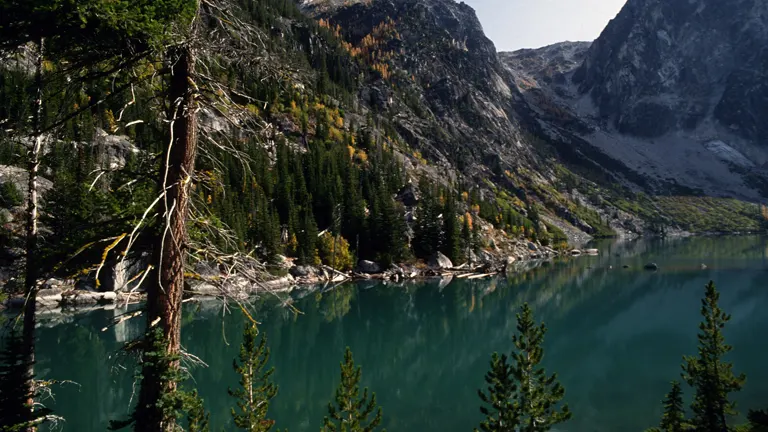
This wilderness area is a crown jewel of the Wenatchee National Forest, famous for its stunning alpine landscapes and over 700 pristine lakes and mountain ponds. Hiking trails weave through scenic vistas, offering breathtaking views of rugged peaks and tranquil waters. It’s a favorite destination for backpackers and nature photographers seeking to capture the untouched beauty of the Pacific Northwest.
2. Glacier Peak Wilderness
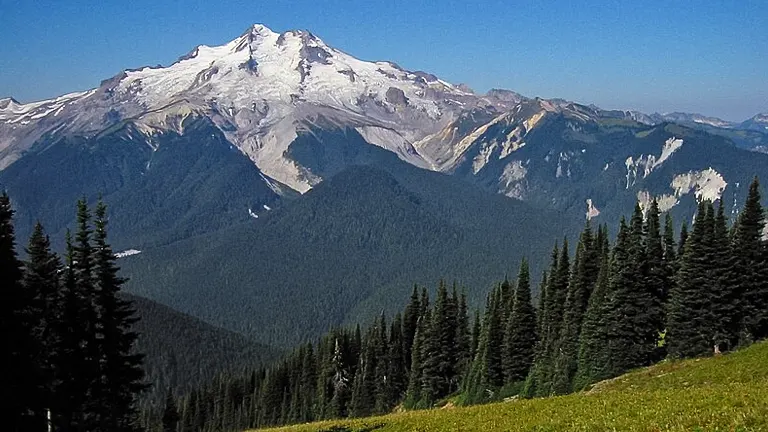
Encompassing rugged mountain terrain and lush forested valleys, this wilderness area is centered around Glacier Peak, one of the most prominent volcanoes in the Cascade Range. It offers a diverse range of hiking trails, from accessible day hikes to challenging multi-day backpacking routes, attracting adventurers and mountaineers.
3. Goat Rocks Wilderness
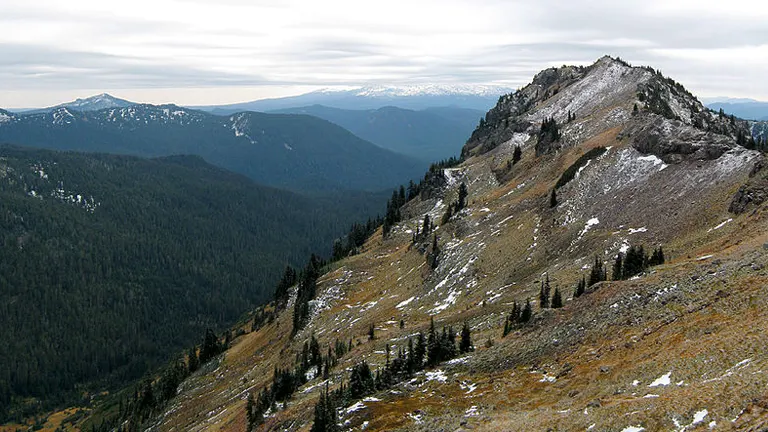
Known for its dramatic rocky ridges and sweeping meadows, Goat Rocks Wilderness is a spectacular area with a unique geological history. It’s a great spot for hiking and wildlife viewing, with trails that provide views of volcanic remnants and the chance to see a variety of mountain flora and fauna.
4. Lake Chelan-Sawtooth Wilderness
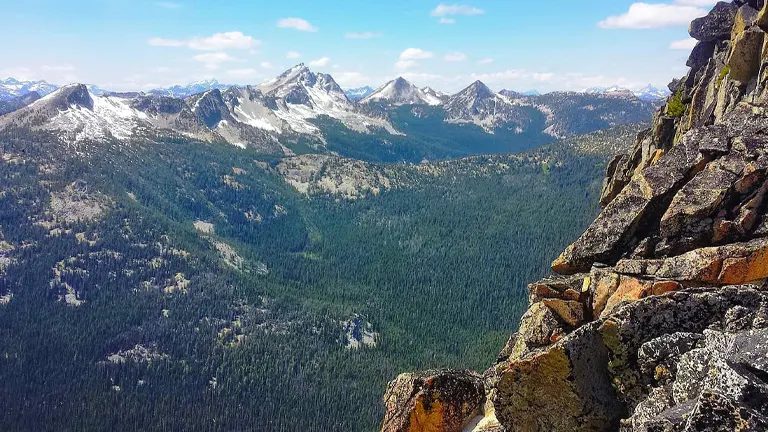
This area combines the serene beauty of Lake Chelan, one of the deepest lakes in the United States, with the rugged Sawtooth Mountain Range. It’s a haven for anglers, boaters, and hikers, offering a mix of water-based and mountainous recreation opportunities.
5. William O. Douglas Wilderness
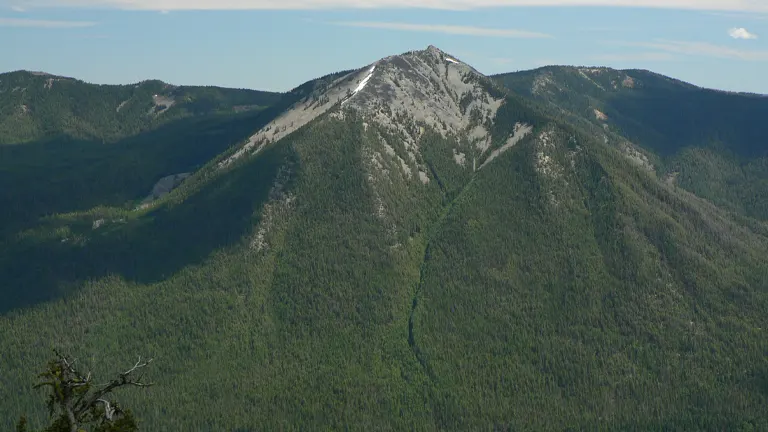
Named after a notable U.S. Supreme Court Justice who was an avid environmentalist, this wilderness features a diverse landscape of dense forests, meadows, and rugged peaks. It’s popular for horseback riding and hiking, with trails that wind through scenic areas rich in wildlife.
6. Methow Valley
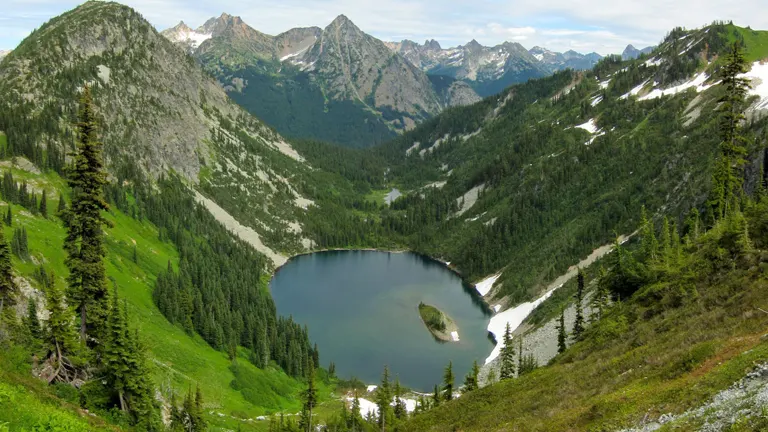
Renowned for its extensive network of Nordic skiing trails, Methow Valley transforms into a winter sports paradise. In the warmer months, it’s a hub for mountain biking, hiking, and horseback riding, offering a blend of recreational activities amidst picturesque rural landscapes.
7. Pasayten Wilderness
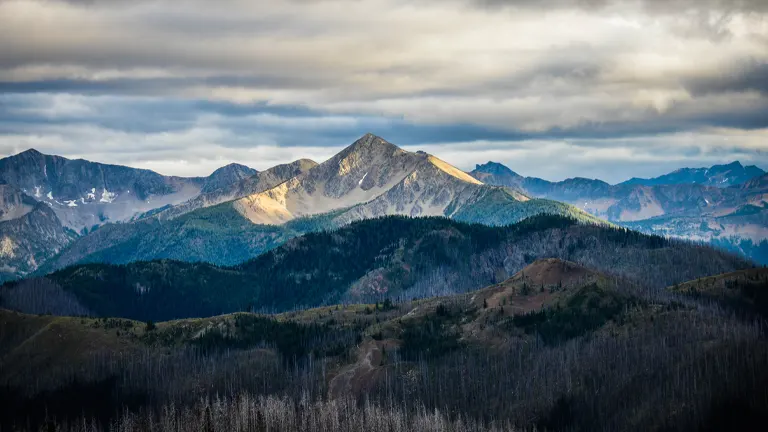
As one of the largest wilderness areas in the state, Pasayten Wilderness offers over 600 miles of trails through remote and rugged terrain. It’s a prime spot for experienced hikers and equestrians looking for solitude and challenging adventures.
8. North Cascades Highway (Highway 20)

This scenic route runs through the heart of the forest, providing easy access to many of its attractions. The highway is not just a means to an end; it’s an attraction in itself, offering stunning views of the surrounding mountains and valleys.
9. Waptus Lake
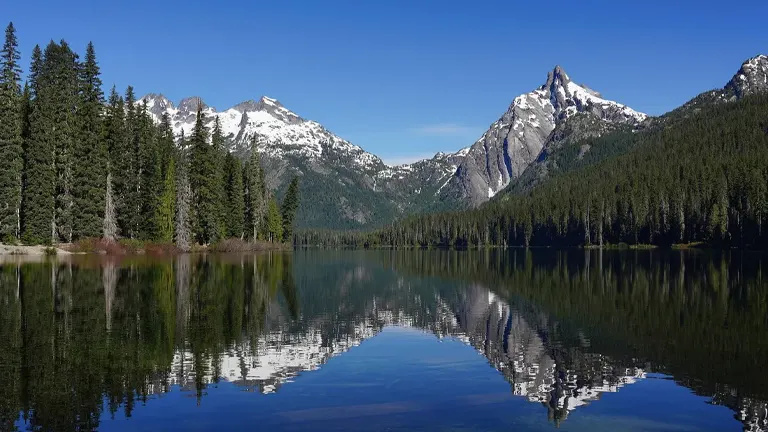
As the largest alpine lake in Wenatchee National Forest, Waptus Lake is a hidden gem, accessible only by trails. It’s a peaceful retreat for those looking to escape the crowds, offering fishing, camping, and hiking opportunities in a serene setting.
Each of these attractions highlights the diverse beauty and recreational opportunities available in Wenatchee National Forest, making it a must-visit destination for nature lovers and outdoor adventurers.
Recreational Activities in Wenatchee National Forest
- Hiking: With hundreds of miles of trails, Wenatchee National Forest is a hiker’s paradise, catering to all levels of experience. From short day hikes to challenging multi-day backpacking adventures, the trails traverse through lush old-growth forests, alpine meadows, and rugged mountain peaks. Popular trails include those in the Alpine Lakes Wilderness, offering breathtaking scenery and the chance to spot local wildlife.
- Camping: The forest offers a variety of camping experiences, from developed campgrounds with amenities to remote backcountry sites. Whether you’re looking for a family-friendly site near a lake or a secluded spot in the wilderness, camping in Wenatchee National Forest provides a perfect way to immerse yourself in nature. Campgrounds like Lake Wenatchee State Park are popular for their scenic beauty and easy access to water activities.
- Fishing: Anglers will find a bounty of fishing opportunities in the forest’s numerous lakes, rivers, and streams. Species like trout, salmon, and steelhead are common catches. Places like the Wenatchee River and Lake Chelan are known for their excellent fishing conditions, and the serene environment adds to the experience.
- Mountain Biking: The forest’s varied terrain makes it a fantastic destination for mountain biking. Trails range from gentle rides through forested paths to challenging routes with steep climbs and descents. The Methow Valley area, in particular, is renowned for its mountain biking trails, offering stunning views and thrilling rides.
- Wildlife Viewing: Home to a diverse array of wildlife, the forest is an excellent place for wildlife enthusiasts. From bird watching to spotting larger mammals like deer, bears, and even elusive creatures like lynx or wolves, the forest’s different habitats support a rich variety of fauna.
- Skiing and Snowboarding: In the winter months, the forest transforms into a snowy wonderland, offering opportunities for downhill skiing, snowboarding, and cross-country skiing. The Methow Valley has a reputation as one of the best Nordic skiing destinations in the country, with an extensive network of groomed trails.
- Horseback Riding: Equestrians can explore the beauty of Wenatchee National Forest on horseback. Many trails are open to horse riding, providing a unique way to experience the forest’s landscapes. Horse camps and trails like those in the William O. Douglas Wilderness are particularly popular among horseback riders.
- Rock Climbing and Mountaineering: For those seeking an adrenaline rush, the forest’s rugged peaks offer excellent opportunities for rock climbing and mountaineering. Climbers can test their skills on the challenging terrain of areas like the Enchantments and other parts of the Alpine Lakes Wilderness.
- Water Sports: The forest’s numerous lakes and rivers are perfect for water-based activities, including kayaking, canoeing, and rafting. The Wenatchee River is particularly popular for whitewater rafting, providing thrilling rapids for an unforgettable adventure.
- Photography and Nature Observation: With its stunning landscapes and diverse ecosystems, Wenatchee National Forest is a haven for photographers and nature observers. The changing seasons offer a dynamic backdrop for capturing the beauty of nature, from wildflower blooms in spring to vibrant fall foliage.
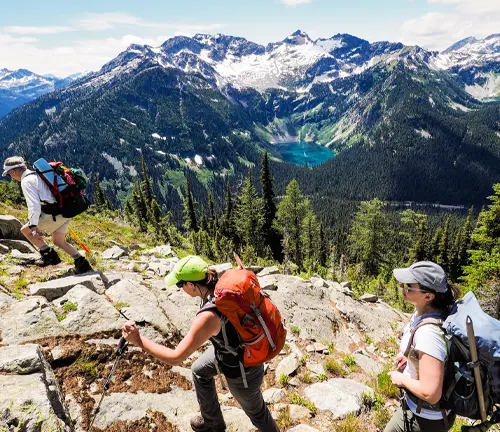
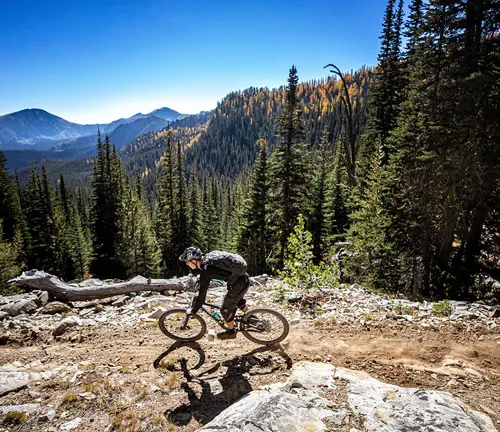
These recreational activities highlight the versatility and appeal of Wenatchee National Forest as a destination for all kinds of outdoor enthusiasts, from the casual visitor to the serious adventurer.
Different Facilities and Amenities in Wenatchee National Forest
- Developed Campgrounds: Wenatchee National Forest offers a variety of developed campgrounds, equipped with essential amenities like picnic tables, fire pits, restrooms, and drinking water. These campgrounds provide a comfortable and accessible camping experience, perfect for families and those new to camping. For instance, Lake Wenatchee State Park campground offers not just basic amenities but also stunning views and easy access to lake activities.
- Backcountry Campsites: For a more rugged and solitary experience, the forest’s backcountry campsites are ideal. These are typically more remote, accessed by trails, and offer a true wilderness experience. They are perfect for experienced campers and backpackers looking for solitude and a closer connection with nature.
- Visitor Centers and Ranger Stations: Visitor centers and ranger stations, such as those in Cle Elum and Leavenworth, provide valuable information, maps, permits, and expert advice about the forest. These facilities are crucial for planning a safe and enjoyable visit, especially for those exploring the more remote areas of the forest.
- Picnic Areas: Scattered throughout the forest are numerous picnic areas, many of which are located in scenic spots with easy access and basic facilities like tables and restrooms. These areas are perfect for day visitors looking to enjoy a meal surrounded by nature’s beauty, such as those along the Wenatchee River.
- Boat Launches and Fishing Access: For anglers and boaters, the forest provides boat launches and fishing access points in various locations, like Lake Chelan and the Wenatchee River. These facilities cater to those interested in water sports and fishing, offering convenient access to the forest’s many water bodies.
- Equestrian Facilities: Certain areas of the forest are equipped with equestrian facilities, including horse camps and trails. These are designed to accommodate visitors who wish to explore the forest on horseback, providing amenities like horse corrals and trail information.
- Nordic Ski Trails: During the winter, areas like the Methow Valley offer groomed Nordic ski trails, catering to cross-country skiing enthusiasts. These trails are well-maintained and provide a safe and enjoyable skiing experience amidst the forest’s winter wonderland.
- Restrooms and Sanitation Facilities: Across various locations in the forest, especially in developed campgrounds and major trailheads, visitors can find restrooms and sanitation facilities. These are crucial for ensuring a comfortable and environmentally friendly visit to the forest.
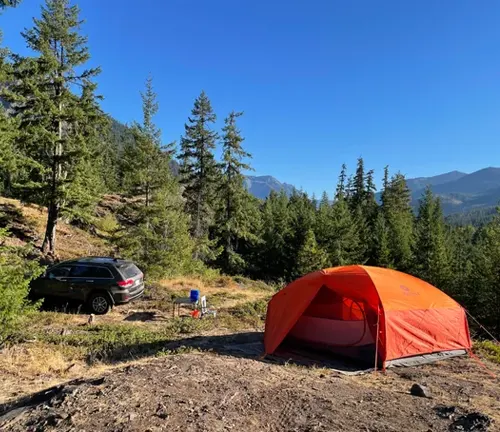
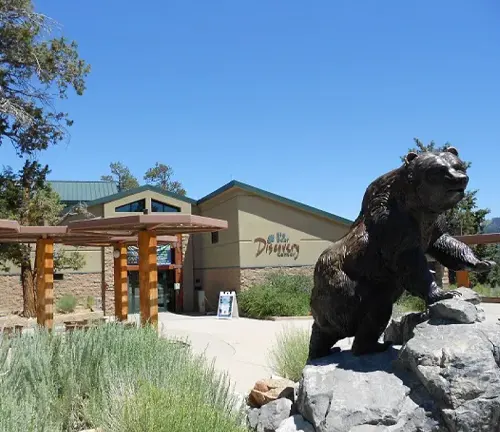
These facilities and amenities in Wenatchee National Forest cater to a wide range of needs and preferences, enhancing the experience of visitors and ensuring the conservation of the forest’s natural resources.
Tips and Advice for Visiting Wenatchee National Forest
- Plan According to the Season: The Wenatchee National Forest offers different experiences throughout the year. Summer and fall are ideal for hiking, camping, and fishing, while winter brings opportunities for skiing and snowshoeing. Spring can be unpredictable with lingering snow on higher trails. Check weather forecasts and trail conditions before your trip, and plan your activities accordingly.
- Respect Wilderness Regulations: When exploring wilderness areas like Alpine Lakes or Glacier Peak, adhere to specific regulations designed to protect these sensitive environments. This includes practicing Leave No Trace principles, such as packing out all trash, minimizing campfire impacts, and keeping a safe distance from wildlife.
- Prepare for Changing Weather: The forest’s diverse terrain can lead to rapid weather changes. Dress in layers and be prepared for sudden rain or temperature drops, especially in higher elevations. This is crucial for a safe and comfortable outdoor experience.
- Carry a Map and Compass or GPS: Cell service can be unreliable or non-existent in remote areas of the forest. Always carry a map and compass or a GPS device when venturing into the backcountry. Familiarize yourself with the area beforehand and always let someone know your itinerary.
- Stay Bear Aware: Wenatchee National Forest is home to black bears and, in rare instances, grizzly bears. Store food and scented items properly using bear-proof containers or bear poles. Knowing what to do in a bear encounter is crucial for your safety and the bears’.
- Obtain Necessary Permits: Some areas, especially designated wilderness areas and popular campsites, require permits. Check the forest service website or contact a ranger station to understand the permit requirements for your destination.
- Pack Adequately for Backcountry Trips: If you’re planning a backcountry adventure, pack essential gear including a first-aid kit, extra food and water, a sturdy tent, and a reliable form of communication for emergencies.
- Be Fire Smart: Understand and follow the forest’s fire regulations. During dry seasons, there may be fire bans in place. If campfires are allowed, use established fire rings, keep fires small, and ensure they are completely extinguished before leaving.
- Respect Wildlife and Plant Life: Observe wildlife from a distance and do not feed them. Be mindful not to trample on plant life, especially in sensitive areas like meadows and wetlands.
- Check Road Conditions: Some forest roads, particularly those leading to trailheads or remote areas, can be rough and require a vehicle with high clearance or four-wheel drive. Check current road conditions and closures before your trip.
- Be Prepared for No Cell Service: Many areas in the forest do not have cell phone coverage. Plan accordingly by informing someone of your plans and expected return, and consider carrying a satellite phone or personal locator beacon for emergencies.
By following these tips and advice, visitors can ensure a safe, enjoyable, and environmentally responsible experience in Wenatchee National Forest.
Recommendation
If you’re in search of a captivating natural escape, Wenatchee National Forest is a must-visit. Its stunning mix of serene alpine lakes, diverse wildlife, and miles of hiking and biking trails offer an unparalleled outdoor adventure. Whether you’re a seasoned explorer or just looking to soak in the beauty of the Pacific Northwest, this forest provides a perfect backdrop for both exhilaration and relaxation. So pack your bags and prepare for an unforgettable experience in one of Washington’s most treasured natural landscapes. Wenatchee National Forest is not just a trip, it’s an adventure waiting to happen!
Conclusion
The Wenatchee National Forest is a majestic, diverse, and vital part of Washington’s natural heritage. Its conservation and recreational offerings make it a cherished destination, inviting exploration and appreciation of the natural world.
FAQs
- What is the best time of year to visit Wenatchee National Forest?
The forest is a year-round destination, offering different experiences each season. Summer is ideal for hiking and camping, fall for its stunning foliage, winter for snow sports, and spring for wildflower blooms. Check local conditions as some areas may be inaccessible during certain seasons. - Are there any permits required for camping or hiking?
Some areas, especially designated wilderness areas, may require permits for camping or special activities. It’s best to check the forest’s official website or contact a ranger station for specific permit requirements. - Can I bring my dog to Wenatchee National Forest?
Yes, dogs are allowed but must be kept on a leash in most areas, especially around developed recreation sites and trails. Always check specific area regulations and practice responsible pet ownership. - Is Wenatchee National Forest suitable for family trips?
Absolutely! The forest offers numerous family-friendly activities, including easy hiking trails, scenic picnic areas, and lakes ideal for swimming and fishing. - What kind of wildlife might I see in the forest?
The forest is home to diverse wildlife, including deer, black bears, cougars, lynxes, and a variety of bird species. Always view wildlife from a safe distance and do not feed them. - Are there guided tours available in Wenatchee National Forest?
While the forest service doesn’t typically offer guided tours, local outfitters and tour companies in nearby communities offer various guided outdoor activities, such as hiking, fishing, and snowshoeing tours. - What should I do in case of a wildlife encounter?
If you encounter wildlife, keep a safe distance, do not feed them, and never approach or corner them. Make noise while hiking to avoid surprising animals and know how to react if you encounter large predators like bears or cougars. - Are campfires allowed in the forest?
Campfires are allowed in designated areas, but regulations can change based on fire danger levels. Always check current fire restrictions before your visit, use established fire rings, and fully extinguish your campfire before leaving.
In conclusion, Wenatchee National Forest offers an unparalleled experience of nature’s splendor. From its towering peaks to serene valleys, this forest is a treasure trove of natural beauty, recreational fun, and ecological wonder. Whether you’re seeking adventure or tranquility, Wenatchee National Forest is a destination that truly has something for everyone.


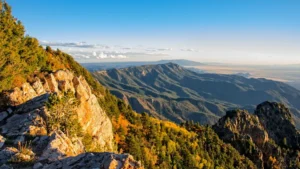
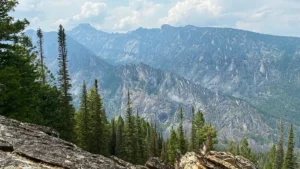
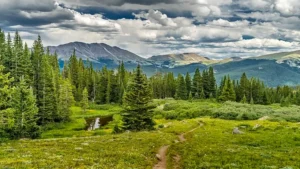
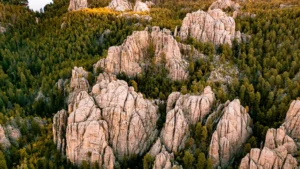
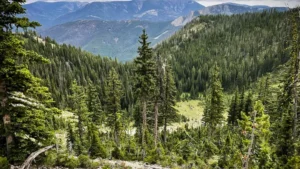

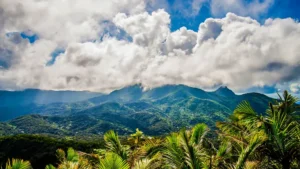
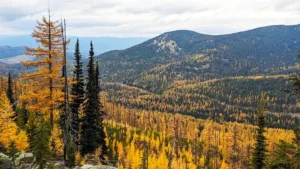

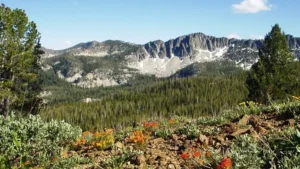
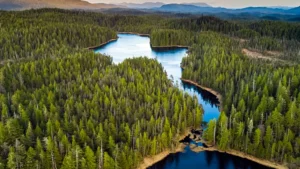
Leave your comment